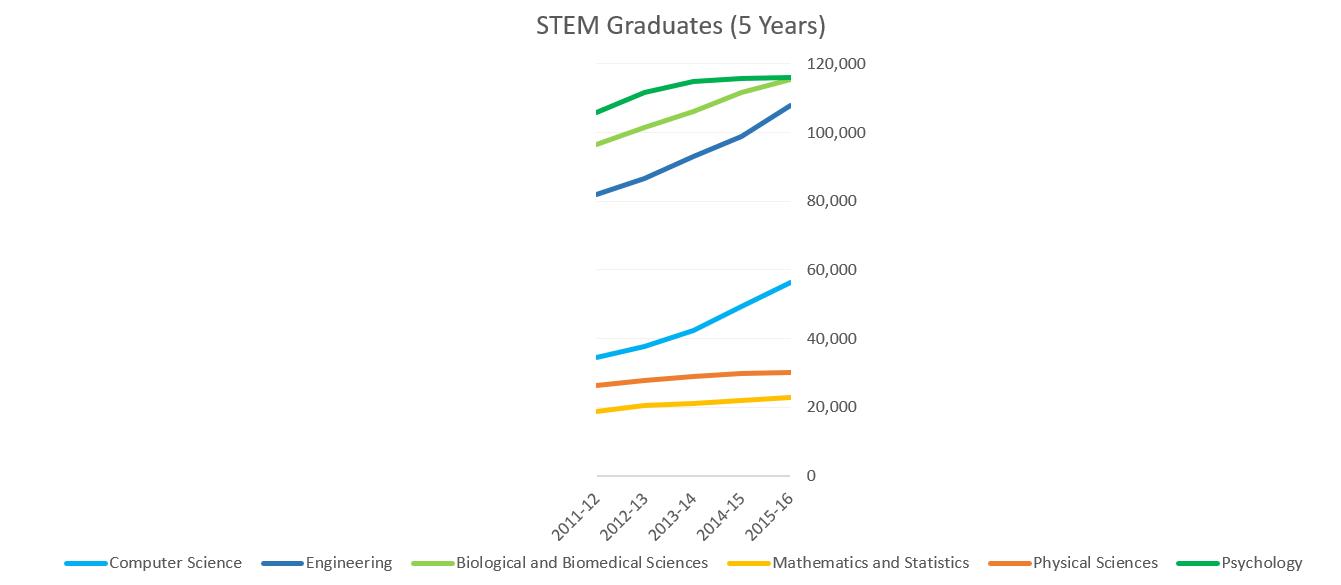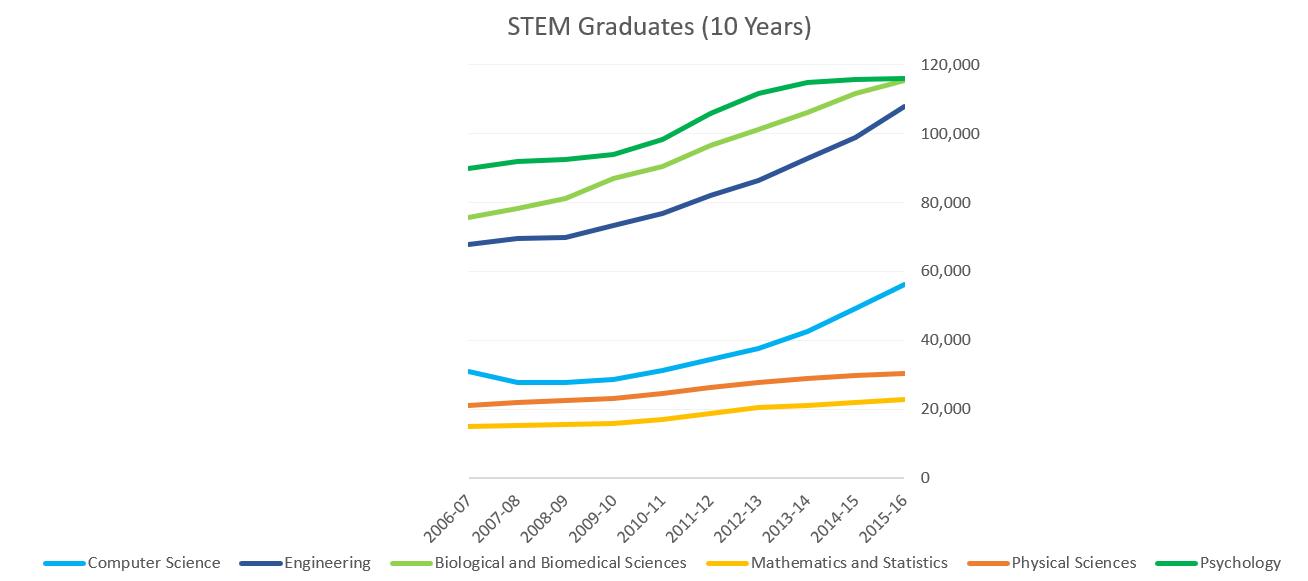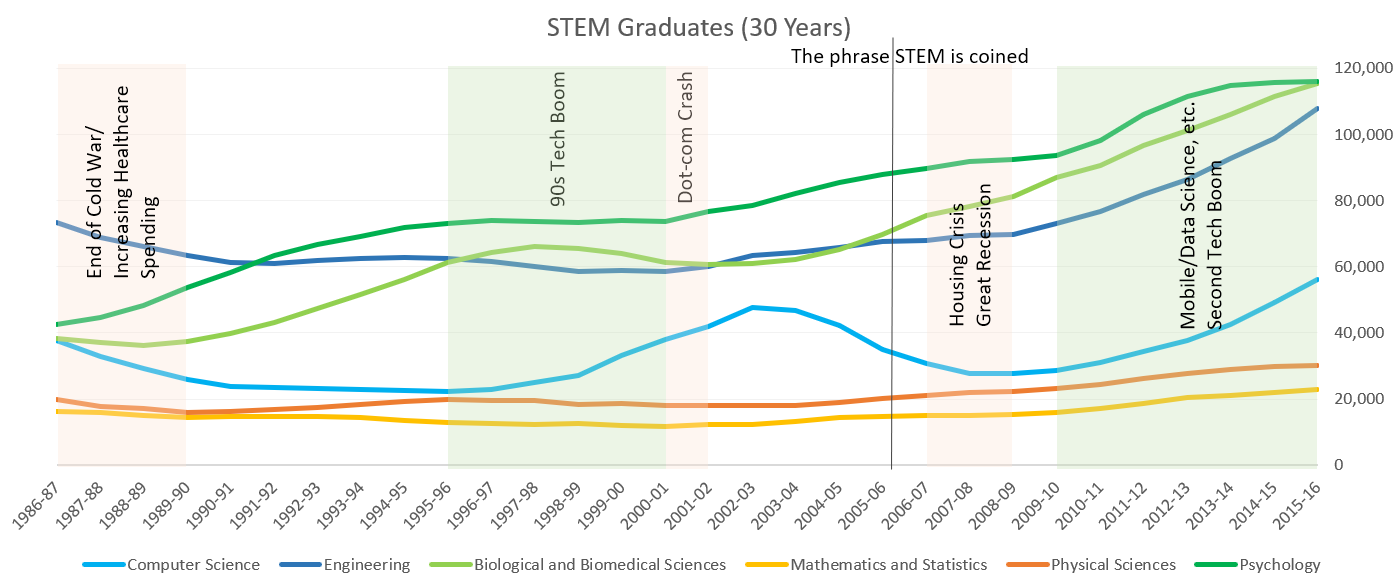In the last 5 years, almost every STEM discipline has been on an upward tick. Computer science, engineering and biology show the largest rate of increase in the number of graduates in the last 5 years. Does that trend extend when we go back 10 years in time?

While most STEM majors showed growth, the number of computer science graduates had decreased from 2006–07 to 2008–09 and remained relatively flat for a couple of years. The recovery in the computer science numbers begins around 2010–11 time frame.

Going back by a few decades is quite instructive as it allows us to see if the economy and market forces have any impact on the choice of major by the students. Usually education has longer cycles and there is lag between when significant changes occur and the effect is felt at the college level.
And so, going back 30 years …

Certain disciplines such as math, statistics and physical science (physics and chemistry) seem to be mostly immune to economic triggers as their number of graduates has held steady for the last 30 years. Engineering and computer science have moved in tandem except for there was a big spike in computer science graduates in response to the 90’s tech boom: The internet, Y2K and the migration of record keeping to databases. That got normalized once the dot com crash happened with the result that the number of computer science graduates dropped from the local peak in 2002-03. Interestingly a similar pattern can be seen in biology graduate numbers as healthcare spending started to rise from the early 90's and continued to do so for the next decade.
How does this help us in 2018? The number of graduates has gone up in almost every STEM major and certain majors have become competitive than others. While the word STEM is very much in fashion currently, it is very clear, physical sciences are the not same as engineering or technology or even psychology. We has posted earlier on how science can differ from engineering both in application and course requirements. Has computer science reached another local maximum or will it continue to rise? It is hard to tell at this point. Computer science seems to be more affected by job market demands as opposed to engineering and biology which are more robust majors. Nonetheless with the coming of AI, machine learning and other tool, computer science may still be on its upward trajectory.
Psychology, the 3rd most popular major nationwide has had a robust trend for the last few years, Though it does seem to be plateauing. A similar behavior was seen in 1999–2000, after which the number of graduates in psychology started to increase again.
The total number of graduates has almost doubled since the mid 80’s. However, it is quite helpful to see long term trends to get a sense which majors are immune to economic events or which majors are affected by them. We recommend that students or parents guiding their students look at both short term and long term trends as a data point while evaluating majors.

